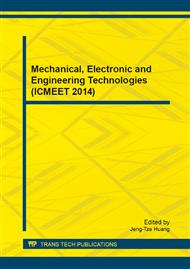p.270
p.274
p.281
p.285
p.289
p.293
p.297
p.303
p.307
Design of Arithmetic Operation Core in Embedded Processor for High Definition Audio Applications
Abstract:
To meet requirements of wider data width, higher throughput, and more flexibility, a specific arithmetic operation core (AOC) is designed for high definition audio application specific processors. The proposed core is capable of processing long bit-width operations, as well as short bit-width operations in parallel. A six-stage pipeline is applied in the architecture of AOC to support amounts of DSP operations, and a novel stage-skipping technique is used to improve the execution efficiency of instructions passing through the deep pipeline. Several DSP kernels and audio data decoding applications are used in performance evaluation of AOC. Experiment results show that the proposed operation core can achieve over 50% higher execution efficiency in audio applications than conventional high performance DSPs, providing an appealing solution for design of operation core for high definition audio applications.
Info:
Periodical:
Pages:
289-292
Citation:
Online since:
April 2014
Authors:
Keywords:
Price:
Сopyright:
© 2014 Trans Tech Publications Ltd. All Rights Reserved
Share:
Citation:


